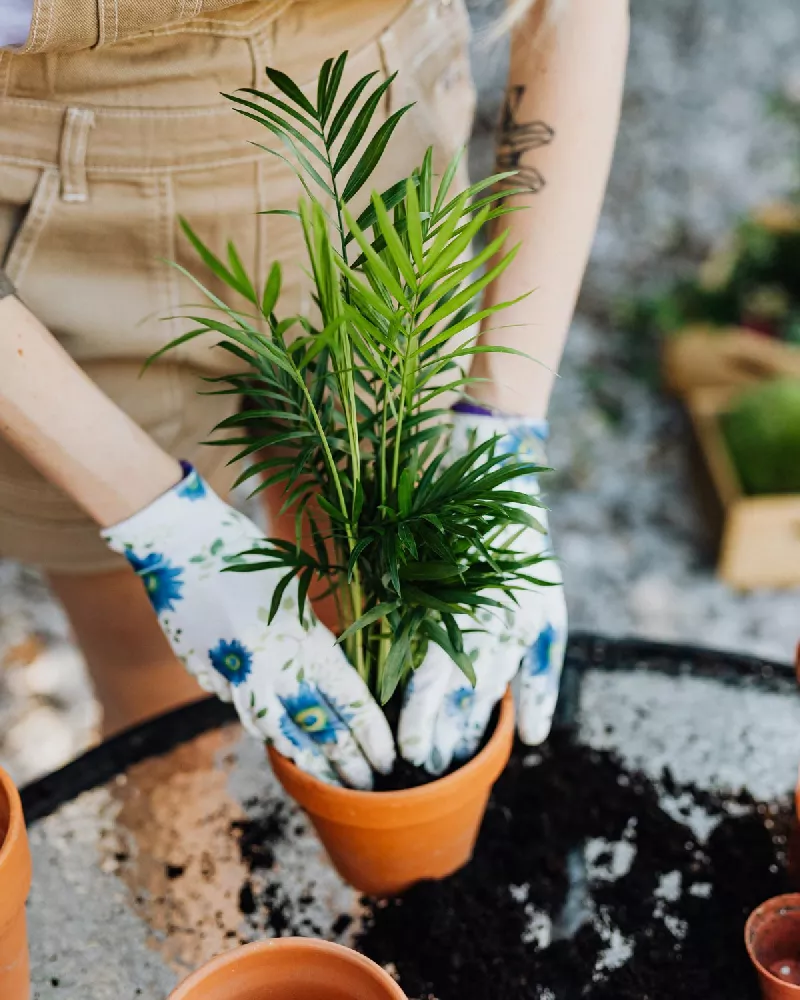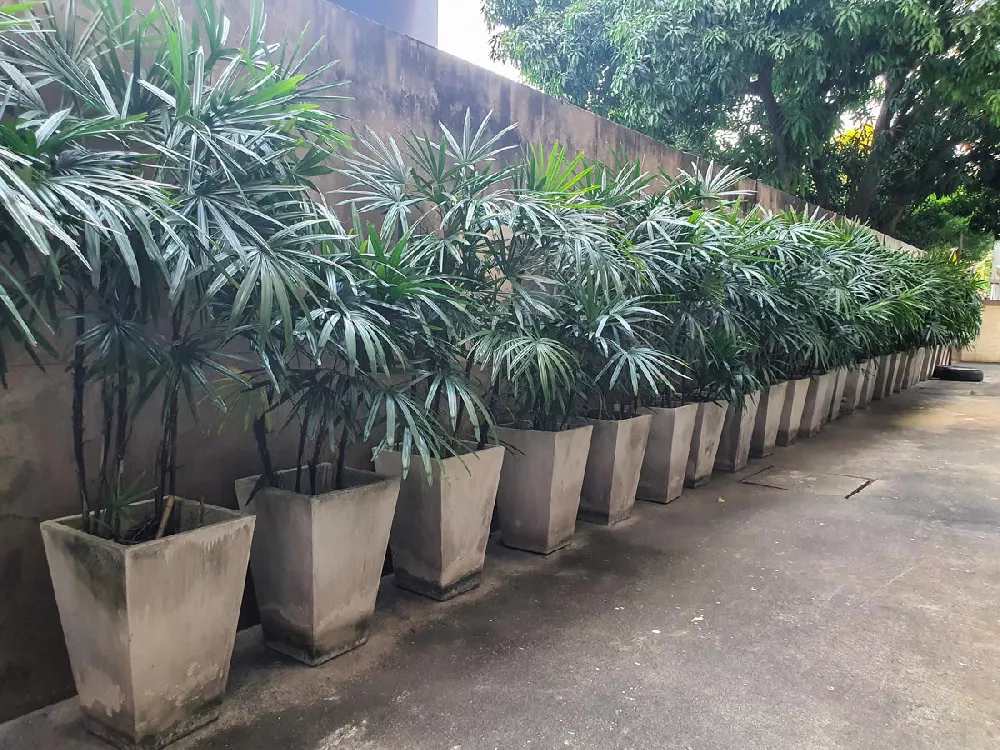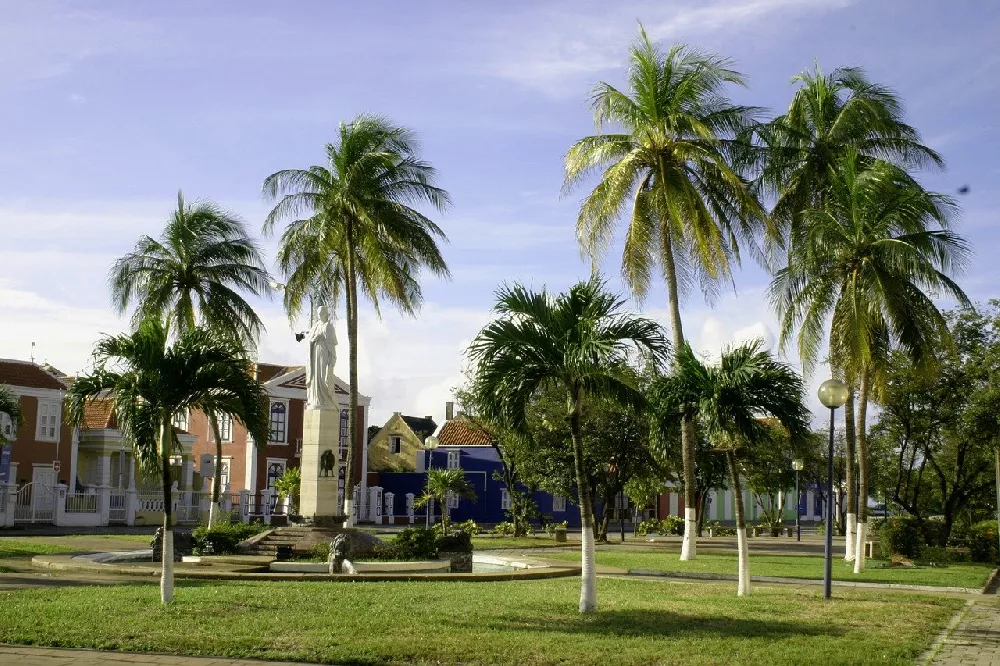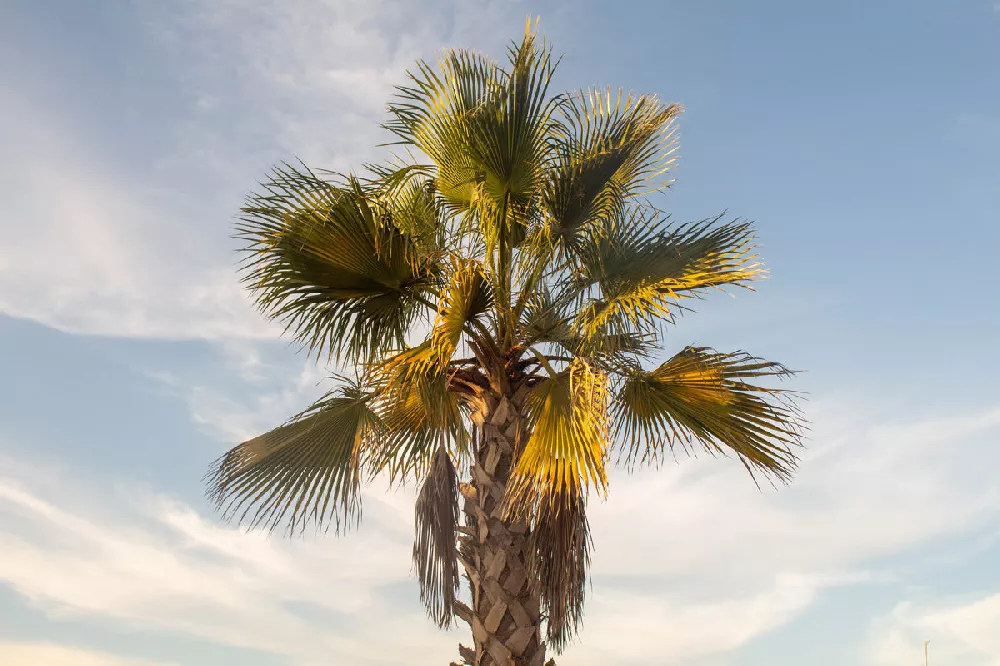- Home >
- Houseplants >
- Majesty Palm Tree
Majesty Palm Tree for Sale - Buying & Growing Guide
- Ships in 1-2 days
- 1-Year Warranty Eligible
- Pots or accessories are not included unless specified in the product options.
Shipping Details:
Products shipped through FastGrowingTrees.com. Once your order is shipped, you’ll receive an email with a tracking number and estimated delivery date. Most orders will ship immediately.
If you've ever longed to add a tropical note to your garden or interior decor, the majesty palm tree, Ravenea rivularis, is just the ticket. This durable, easy-to-care-for tree thrives outdoors in the most southern regions of the U.S. But it's as an indoor, container-grown plant that it excels for most owners. Unlike many tropical plants, it only needs partial sun, making it easy to find a place in your house where it will thrive. It's not a plant that needs to be fussed over, either, with simple care requirements and little pruning needed. To top it off, it's a wonderfully graceful and attractive tree, with arching fronds that add structure to any room in your home. Here are a few more reasons to have one or more at your home:
- Palm trees are excellent air cleaners, removing toxins such as benzene from your home's atmosphere.
- When grown indoors, its maximum height stays a reasonable 8 to 10 feet.
- These fast-growing palms will quickly achieve a size that provides impact wherever they are placed.
Plant Care
Sunlight

Your majesty palm tree will thrive with partial sun, with about three to six hours of direct light a day.
Watering
Water established plants whenever the soil dries out; newly planted palms will need two or three waterings a week.
Fertilizing

Fertilize your tree with a product formulated for palm trees throughout the growing season.
Planting and Care
Planting instructions
If planting outside, site your majesty palm where it will receive partial sun, no more than six hours a day. If planting in a pot, choose a container that is about 2 inches larger all around than the shipping container, with good drainage in the bottom. Place good-quality potting soil in the pot, or, if planting outside, choose an area with fertile, well-draining soil that is not underneath overhead utility lines. Unpot your plant, teasing out any encircling roots, which can eventually girdle the tree and kill it. Dig a hole as deep as the root ball and wider. Place the tree in the hole and fill in around the roots with topsoil or potting soil, tamping down as you go to eliminate air pockets. Water generously. Apply a 2- to 3-inch layer of mulch to the root zone to conserve moisture and hinder roots, being careful that it does not touch the trunk itself.
Watering and nutrients
When newly planted, water your majesty palm tree several times a week. Once it’s established and starting to put forth new leaves, you can taper back to once a week. Although the majesty palm likes moist soil, it does not tolerate standing water. If the fronds begin to turn yellow, you may be overwatering it. Apply a slow-release palm fertilizer to your tree in spring, or use a balanced product such as an 8-8-8 formulation, as indicated on package directions, throughout the growing season.
Pruning
Pruning a majesty palm tree is very simple: just cut back any fronds that have turned yellow or brown. This will normally happen to the oldest, outer leaves as new ones rise out the tree’s interior. Use scissors or clippers, and cut back to the base of the trunk.
Pests, diseases, and animals
When grown indoors, majesty palm trees may earn the attention of common houseplant pests, such as aphids, scale insects, and whitefly. You may also see signs of red spider mites. Wiping the leaves clean with a damp cloth or sponge can help keep infestations to a minimum. A palm grown indoors will be unlikely to suffer from any diseases that are common to palms. One grown outdoors might experience diseases such as fusarium wilt or leaf spot diseases. These are fungal, and can be treated by pruning away damaged areas and applying a copper fungicide.
Achieving maximum results
Majesty palm trees like the right combination of water, sunlight, and fertilizer. Once you achieve that balance, your plant should thrive. Pay attention to your palm, and it may tell you what’s wrong. If, for example, the leaves turn yellow, it may be getting too much water. Brown, dried leaves indicate too little water. If your tree is not thriving, try changing one factor at a time to see what works. Move it to a different window, for example, then give it a few weeks to acclimate before you assess the plant’s health. Another tip: Place your plant in a tray that contains an inch of water to increase the humidity around the tree, and try misting the leaves regularly for the same reason.
FAQs
Where can the majesty palm tree be grown outdoors?
Hardy in USDA hardiness zones 9 to 11, the majesty palm tree can be grown outdoors anywhere that doesn't go below 30 degrees Fahrenheit in temperature. This includes the coastal region of California, southern Arizona, Texas, and Louisiana and most of Florida. In the rest of the U.S., the tree can be grown in containers that are brought outside during the summer months.
How big will a container-grown majesty palm tree get?
In general, container-grown plants are limited by the size of their container, which constrains the root system and keeps the tree from growing as large as it would if planted outside. In the wild, majesty palm trees can grow as tall as 50 feet, but your indoor plant should max out at a reasonable 6 to 8 feet or so. If you feel your palm is getting too large for your space, unpot it and gently trim back the roots, then repot it in fresh soil.
How fast does a majesty palm tree grow?
A majesty palm can grow a foot in a year. This means that a container-grown plant can achieve its maximum height within a decade, if it receives good care. A tree grown outdoors may grow faster, however, depending on where it is sited.
Compare Similar Products
You can't add more Product Name - Product size to the cart.
OK










